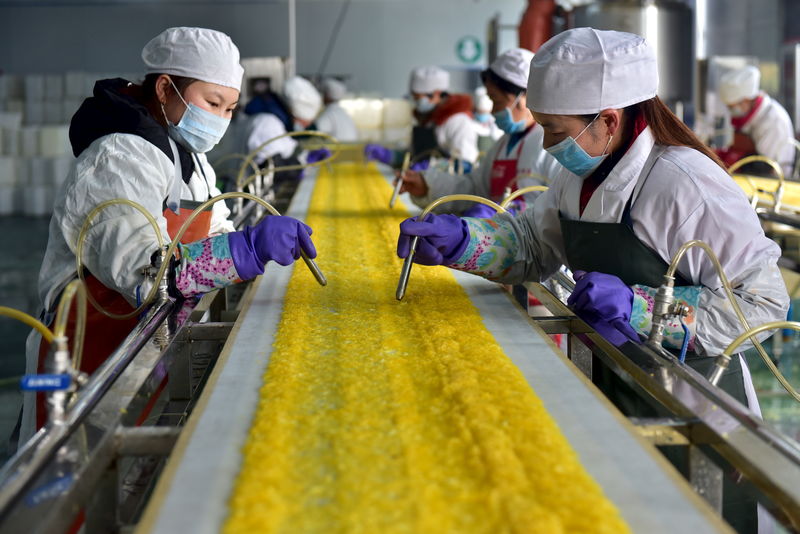By Stella Qiu and Tony Munroe
BEIJING (Reuters) - When the government of the south China city of Zhongshan heard that watchmaker Kam Yuen Group was furloughing more than 100 workers, it brokered a deal to shift the surplus staff to another manufacturer - a growing practice
The arrangement will see Guangdong Welland Technology Co, which makes smart-watches and weighing scales, take on 140 Kam Yuen workers over the next six months.
Labour-sharing in China's export manufacturing heartland, prompted by the coronavirus pandemic that by some estimates cost up to 80 million Chinese jobs at its peak, forms part of a wider effort by Beijing to encourage more flexible work - including self-employment and part-time roles - to support jobs and maintain social stability.
"It is better to go to work than being put on leave, even as the hourly wages they receive could be somewhat lower than what they got paid before," said Wang Yaokun, human resources director at Hong Kong-based Kam Yuen, which had already lost 800-1,000 jobs in Zhongshan.
China's total workforce has shrunk slightly since 2017 to around 775 million last year, with the export sector employing about 180 million workers.
Chinese manufacturers have struggled in recent years to attract employees as the workforce ages and younger people eschew factory jobs. The pandemic has ravaged the economy and exacerbated imbalances, boosting makers of medical equipment as well as computers and mobiles for the many millions stuck at home even as traditional labour-intensive sectors such as textiles, toys and furniture see weak demand.
Under the agreement between Kam Yuen and Welland, employees seconded to Welland are still employed by Kam Yuen and will return to the company after a six-month stint, when Kam Yuen hopes business is better.
"We do not expect the business to completely recover until the end of year, as most of our orders are from the EU and Switzerland," Wang told Reuters.
Local governments across the export-focused provinces of Guangdong, Jiangsu and Zhejiang have been facilitating similar arrangements in recent months, with the central government endorsing the approach in nationwide guidelines issued in July.
In Dongguan, a major manufacturing hub, about 20,000 workers from 750 manufacturers have signed up to such schemes since February, according to Dongguan government.
In the high-tech industrial development zone of Heyuan city, home to over 300 industrial companies, more than 100 factories scaled back operations after the pandemic hit orders.
Through an employee-sharing programme launched in late May, over 3,000 workers have been redeployed, according to a local official who requested anonymity.
China forbids companies from earning a profit by leasing out their workers.
"Firms were first worried about legal arrangements of work injuries, staff poaching and the protection of commercial secrets, but through government mediation, they managed to reach an agreement," the official said.
These labour-sharing schemes are not unique to China. As the pandemic wipes out millions of jobs worldwide, some global corporations have redeployed surplus workers.
BEYOND COVID
In China, some industry and government officials say the schemes could outlast the pandemic shock.
Boyang Xue, North Asia analyst at consultancy DuckerFrontier, said ongoing risks of economic "decoupling" between the United States and China, a shrinking labour force and rising costs would drive more flexible work arrangements.
Lisheng Wang, a Hong Kong-based economist at Nomura, said workers' legal rights would need to be protected for such arrangements to succeed.
"For some industries with a low-entry barrier but different production cycles, employee-sharing could help increase labour utilization, reduce average labour costs, improve productivity and profitability, and increase workers' income," he said.
For example, the production peak for the electronics sector is usually in the fourth quarter, which differs from that of the textile industry.
Darfon Electronics Corp (TW:8163), a Taiwanese electronics manufacturer which owns a factory in China's Huaian city, has from March borrowed 200 workers from Jiangsu Canasin Weaving Co, a supplier of hotel linen, said Su Bohan, an investor relations official at Darfon.

"We have different production cycles, so we can share labour," Su said.
